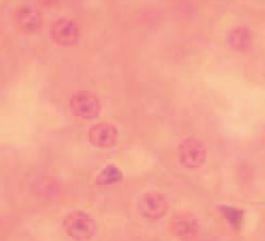What is the Hantavirus?
Hantavirus caught the eye for the first time times in 1951 in the Korean peninsula. The United Nations troops there were then on a mission and its members were mysteriously infected with this disease which has a mortality rate of 5% to 10%.
Korean hemorrhagic fever has severely affected these troops during the war from 1950 to 1953. About 3,000 soldiers developed the symptoms of this previously unknown disease in the USA.
The Hantavirus was transmitted to humans by inhalation of contaminated material through the urine or stool of the host animal: the mouse fields or Apodemus agrarius. It’s only later that the virus was classified as a genus Hantavirus.

The main symptom of this disease is hemorrhagic fever with syndrome kidney disease and its cause is Hantaan virus, named after a river in Korea.
“The Hantavirus belongs to the Bunyaviridae family, in which we find five genera: Bunyavirus, Phlebovirus, Nairovirus, Tospovirus and Hantavirus.”
What is the virus Sin Number?
The Sin Nombre virus is the North American virus of genus Hantavirus which can cause Hantavirus pulmonary syndrome and which is ransmitted to humans through the deer mouse.
The Hantavirus belongs to the Bunyaviridae family, in which there are five genera:
- Bunyavirus,
- Phlebovirus,
- Nairovirus,
- Tospovirus
- Hantavirus.
All genera of the Bunyaviridae family have arthropods as vectors, except the Hantavirus which is transmitted by rodents.
How the Is Hantavirus transmitted?
The Hantavirus has been around for a very long time. He appeared in humans following ecological disturbances which have resulted in contact between infected rodents and humans.
Hantavirus is transmitted to humans through inhalation materials contaminated with urine or faeces rodents.
What are the causes?
You can contract the disease by inhaling aerosols that contain the saliva of rodent carriers or by introducing this saliva into a skin injury and, which occurs more rarely, by a bite of the deer mouse.
In the East, Hantavirus causes hemorrhagic fever accompanied by renal syndrome while the Sin Nombre virus is associated, in South America North, with pulmonary hemorrhagic fever. At Canada, a serological study has shown that cause of hemorrhagic fever with renal syndrome is a Hantavirus.
Who is particularly at risk?
People living in rural areas who have been contaminated with the feces of mice carrying the viruses are particularly susceptible to contracting the
Hantavirus.
In Canada, more than 2,000 sera from all age groups and all provinces were
tested to verify the possible presence of the antibody to the virus by the indirect immunofluorescence technique.

The frequency of positivity ranged from 0.3% to 4.0%, with a national average 1.4%. It has been reported that in some areas of in the Atlantic, positivity was higher than in the hyperendemic regions of Korea.
Ontario (at the park Algonquin, near Sudbury), Manitoba, Alberta, the British Columbia, Quebec and Saskatchewan displayed a positivity varying between 0.5% and 1.5%. No correlation has been proven between geography and the sex of those infected, but positivity increases with age, especially in people aged 65 to 93.
What are the signs and how is the diagnosis made?
The signs observed are:
- Hyperthermia sudden,
- Headache that can be accompanied by arthralgia, myalgia as well as headache and nausea accompanied by abdominal pain.
- Anorexia and / or prostration can lead to degradation the general condition of the patient.
- Hemorrhagic syndrome then appears.
These hemorrhagic manifestations are often superficial: petechiae, conjunctival haemorrhages, gingivorrhagia, bruising at the injection sites and larger haemorrhages are also possible, such as hematuria, this which means, with proteinuria, - Kidney damage acute, for Puumala virus.
- Visceral damage is also possible, including damage to the lungs by the Sin virus Number.
- Hypovolemic shock due to capillary extravasation of plasma may also occur and it can lead to death, but a cure spontaneous is also possible.
The diagnosis is generally made following a blood sample (dry tube). It arises by reverse transcriptase and by reaction of polymerase chain reaction, a rapid identification method that gives results within 24 to 48 hours. Rapid serological tests are performed by indirect immunofluorescence as well as a search for immunoglobulins M specific.
We also use the method immunoenzymatic (ELISA method) for detect immunoglobulin M and level high immunoglobulin G, so the virus
Puumala. Cultivation from samples blood or tissue is carried out thereafter. We can find viral antigens in epithelial cells of renal tubules.
What is the treatement?
Ribavirin is active on Hantaviruses. It is used as a curative treatment by way intravenous with a loading dose of 30 mg / kg, then 15 mg / kg, every 6 hours, for 4 days, then at a dose of 7.5 mg / kg, every 8 hours, for 6 days. Preventive treatment is carried out orally at a rate of 2 g per day, for 10 days.
If necessary, symptomatic treatment will be initiated like infusion, transfusion and enteral or parenteral feeding.
What about prevention?
People should be strongly advised to wear gloves to clean the dust, to avoid any aerosol, spray surfaces with 5% bleach and always pick up dead mice for them incinerate with other garbage.
